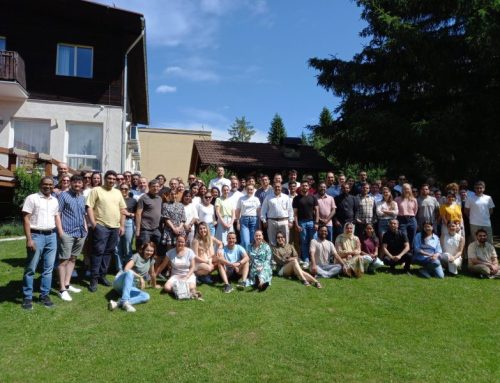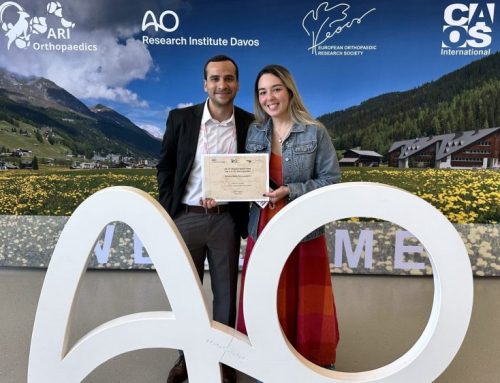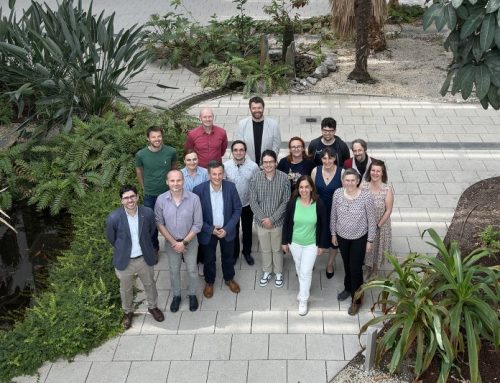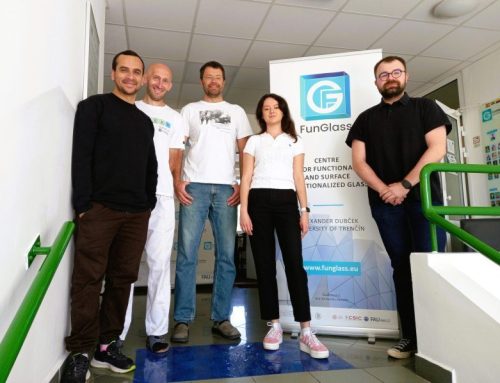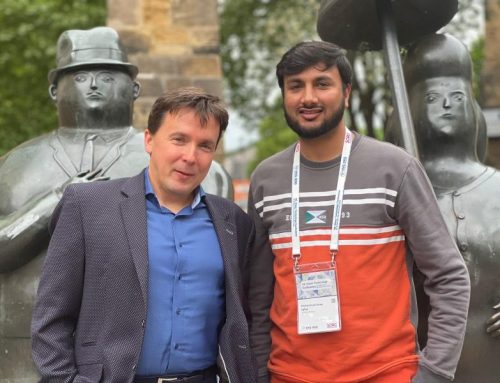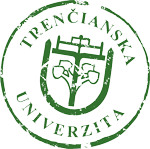Interview with Prof. Dušan Galusek in the Slovak Spectator
The Slovak Spectator published an interview with Prof. Dusan Galusek about the fascinating story of FunGlass center, about its development of the center from humble beginnings to significant success, about the possibilities in glass and ceramic research and their application to our lives and much more:
Source: The Slovak Spectator, 29. Feb 2024
Author: Matúš Beňo
Like ceramics, glass is a ubiquitous part of everyday life. We use it to make packaging for food and drinks, household decorations, and spectacles among many other things. And just like ceramics, glass plays a key role in modern technology. For example, without fibre-optic cables there would be no high-speed internet.
“People are attracted to glass because it is transparent, yet a solid material,” says Professor Dušan Galusek, director of the Centre for Functional and Surface Functionalised Glass (FunGlass) at the Alexander Dubček University of Trenčín, in an interview with The Slovak Spectator.
“At the same time, there are types of glasses that are not transparent. And although glass is generally chemically stable and resistant, there are glasses that dissolve very easily in water or in bodily fluids, and thus are suitable as a biomaterial,” adds Galusek.
And so while ceramics are used in the body, for example to replace hip joints, glass can help in the restoration of bones. This, too, is one of several areas that Galusek deals with in his research.
Helping the human body
How is it possible that something as solid as glass can be dissolved by bodily fluids?
Galusek explains that the chemical stability and chemical solubility of glass is related to its composition and structure, and both properties can be adjusted to make dissolution possible.
“Most people don’t remember this any more, but there is something called water glass; basically it’s sodium silicate that is completely soluble in water. Back in the day, when our grandmothers didn’t have refrigerators, it was used for things like storing eggs. Water glass sealed their pores to prevent them from going bad,” he explains, adding that glasses that dissolve in the body contain a certain amount of phosphorus and alkali. In this way, when interacting with bodily fluids, the glass gradually dissolves in a controlled manner over the course of several weeks or months.
The first experiments in this area were made by Professor Larry Hench in around 1970. He prepared glass, which, when implanted in a human bone like a graft, fused with the bone so tightly that it could not be separated. This eventually led to such glasses being used, for example, to repair bone defects that arise when a bone tumour is removed.
“Bone does have a certain regenerative capacity, but once the size of the defect exceeds a critical value, the bone cannot heal itself. You have to put something in it to fill the defect and ensure that the bone does not break further in that place. Glass from older materials would firmly fuse with the bone and form a support structure. In the case of newer materials, the glass dissolves in such a way that it secretes ions into the body that support the activity of the bone,” explains Galusek.
According to him, the research is directed to produce glass in the form of various types of particles or nanoparticles, which have small pores at the level of several nanometres called mesopores that contain medicine; these are so small that they can in fact pass through cell membranes. This is one possible way to deliver, say, cytostatics in the treatment of cancer.
However, this is not restricted to bones. Researchers are able to create glass nanoparticles with added bioactive polymers that serve as soft matrices. They can be used as a source of ions, for example, to help regenerate soft tissues such as cartilage or skin. Some ions even have antibacterial effects, making them more suitable for healing an infected wound without the need to use antibiotics.
Most ceramic materials that are inserted into the body are bioinert, meaning they either do not interact or interact very little with human tissue. Ceramics have the advantage of being much stronger than glass. This means they can be used, for example, for joint replacements.
“Glass cannot be used because it does not have sufficient mechanical properties,” says Galusek.
Creating a respected centre
As well its being director, Galusek is also the founder of FunGlass. Officially founded in 2017 as part of the EU’s Horizon 2020 programme, it is the only such centre of excellence in the country.
Trenčín has a relatively long history in the field of glass research. Until 1993, there was a glass research and development institute in the city. This was reduced to a three-person laboratory, which survived thanks to the Institute of Inorganic Chemistry of the Slovak Academy of Sciences. When Alexander Dubček University was established in Trenčín, it became their common workplace and gradually grew. After Galusek’s arrival, he was able to get European funding and projects, thanks to which the lab acquired high-quality experimental equipment.
Galusek was instrumental in participation in the Horizon 2020 programme, a European Union scheme designed to create centres of excellence in countries with lower-than-average performance in science within the EU. Out of a total of 164 projects, his ended up among the 10 that the European Commission selected for financing. The funds allowed the centre to acquire equipment, build new laboratories, and hire more personnel. At the same time, they are still working to ensure the sustainability of the centre after the original funding ends this year.
“I must say that we are doing quite well, we have already managed to contract 3 new projects within the Horizon Europe programme worth about €7 million. So I think we are quite successful and we will continue,” he continues.
“In the field we do, we are definitely the leader in Slovakia. As far as Europe is concerned, we are considered a respected partner. I think we conduct research at a very respectable European level, I might even go as far as to say above the European average.”
Several areas of research
Glass has long been used as packaging for food or in other common uses due to its properties. But it can also have completely different applications. This is where the functional part of the centre’s name comes in.
“Functional means that glass has properties in addition to the common and generally known ones. It can be bioactive, luminous, electrically conductive, magnetic. In our research, we primarily focus on modifying glass to give it additional functionality. We do this in two ways. Either we modify the composition and the structure of the glass – we add other components to it – or we take ordinary window glass and modify its surface. For example, by implanting other components into the thin surface layer, or by applying a thin coating,” he explains.
In addition to the possibility of using gl
ass in the human body, Galusek’s team deals with the use of pharmaceutical glass that is not recyclable. Although it is often said that glass is infinitely recyclable, this is not entirely true, so the goal is to figure out how to use such glass.
The team is a part of a project coordinated by the University of Vigo in Spain. It is focused on the development of new glass recycling technology.
“To put it simply, it’s basically a technology of waste glass laser printing. Imagine you have a bottle that you don’t need and you put it in a machine that looks like a dishwasher. At the other end, you get a product that you choose using an app on your phone. We are investigating the effect of the process on chemical resistance, optical properties and the like,” he says.
Building international connections
In 2019, Galusek received a Slovak Scientist of the Year award in the category ‘Personality of International Cooperation’. He owes his success in part to spending quite a lot of time abroad and to having created a network of contacts early in his career. He worked in Germany at Darmstadt University of Technology and Karlsruhe University of Technology, and in Great Britain at Brunel University and the University of Leeds.
“I made contacts there. Then it was very important to go to conferences. In short, you had to show your face so that people get to know, hear and see you at lectures, and know that you are doing something interesting. Then it is very important to get close to those people as well. I’ll put it this way; to actually sit down with them in a bar in the evening for a beer. That’s how friendships are formed. Then, when you approach them with an idea for a project, they’ll say ‘Hey, why not? After all, we know each other. Let’s do it.’,” he says, adding that it is important that excellent scientists in Slovakia are not afraid to communicate.
“To a certain extent, the idea of being small is inside of us, as if to say: ‘How can we compete with the likes of Germans or the British?’ However, when you get there and start working with them, you will find that we are no less knowledgeable, no less capable. Sometimes, maybe, we have a more open mind, because we always had to manage, as there was no money for many things. I never felt that my foreign mentors or colleagues took me as inferior for coming from Slovakia, from eastern Europe.”
Interestingly, Galusek himself originally had no plans to research glass; instead, he wanted to be an archaeologist. But he got into the study of ceramics, and his stays abroad were devoted to this area as well. When he was deciding where he would go after finishing his doctorate, an offer emerged to work at the then small glass research centre in Trenčín.
“I come from Trenčín, it was suitable to return to my home town. In a way, when I look back, I think it was probably the best thing I did in my life. If I compare it with, say, Bratislava, where there are many institutes and universities, and thus a lot of competition, staying at a small university gives a person sometimes unexpected advantages. This is exactly what one of my project partners, [biomaterials professor] Aldo Boccaccini, told me. He started at Imperial College London but then moved to a university in Germany. His former colleagues thought he was crazy to go to what they saw as a rural university. He too said that it was the best thing he ever did in his life. Now he has a large group and is one of the most cited scientists in the world,” concludes Galusek.


